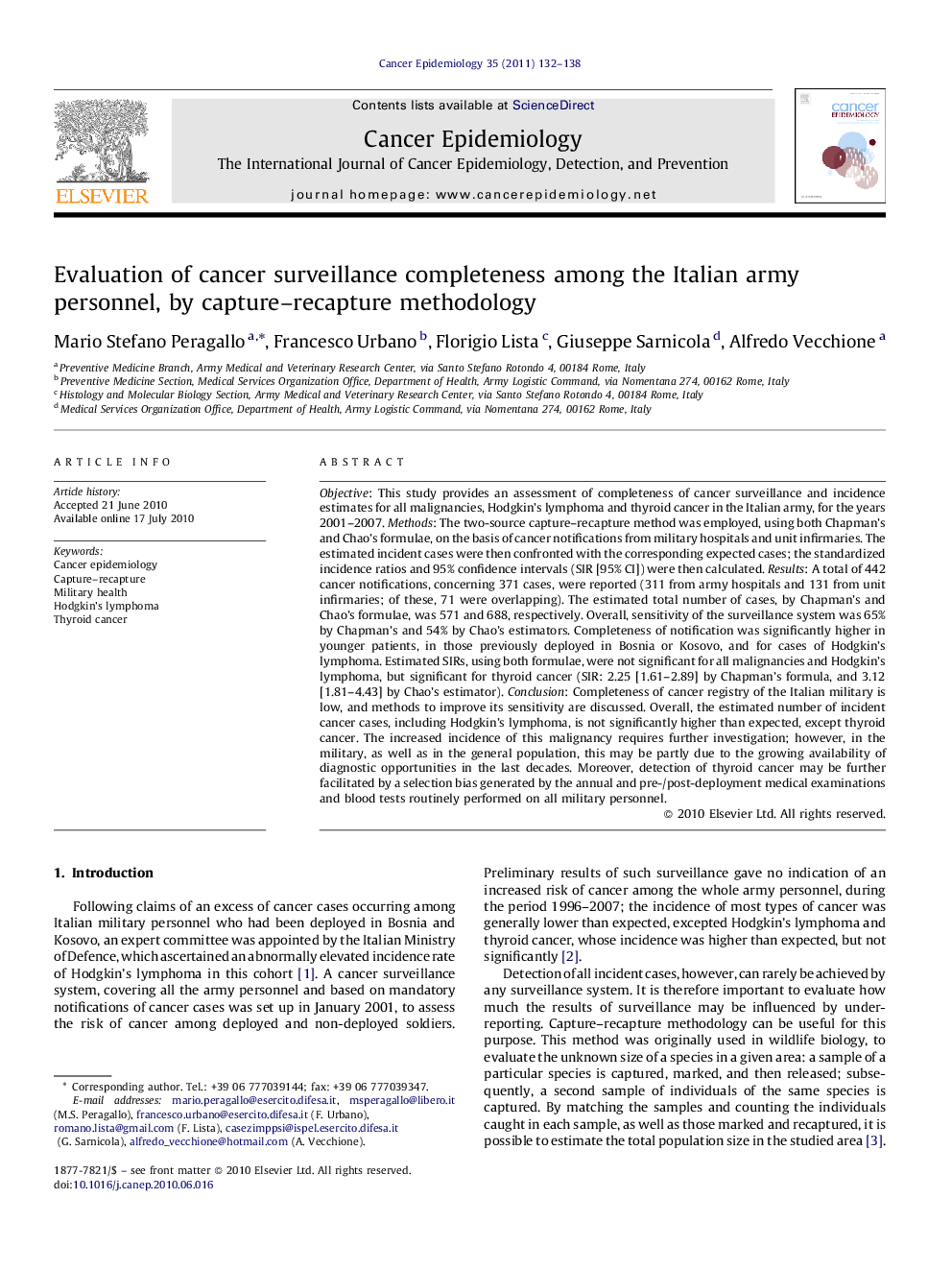| کد مقاله | کد نشریه | سال انتشار | مقاله انگلیسی | نسخه تمام متن |
|---|---|---|---|---|
| 2109266 | 1083867 | 2011 | 7 صفحه PDF | دانلود رایگان |

Objective: This study provides an assessment of completeness of cancer surveillance and incidence estimates for all malignancies, Hodgkin's lymphoma and thyroid cancer in the Italian army, for the years 2001–2007. Methods: The two-source capture–recapture method was employed, using both Chapman's and Chao's formulae, on the basis of cancer notifications from military hospitals and unit infirmaries. The estimated incident cases were then confronted with the corresponding expected cases; the standardized incidence ratios and 95% confidence intervals (SIR [95% CI]) were then calculated. Results: A total of 442 cancer notifications, concerning 371 cases, were reported (311 from army hospitals and 131 from unit infirmaries; of these, 71 were overlapping). The estimated total number of cases, by Chapman's and Chao's formulae, was 571 and 688, respectively. Overall, sensitivity of the surveillance system was 65% by Chapman's and 54% by Chao's estimators. Completeness of notification was significantly higher in younger patients, in those previously deployed in Bosnia or Kosovo, and for cases of Hodgkin's lymphoma. Estimated SIRs, using both formulae, were not significant for all malignancies and Hodgkin's lymphoma, but significant for thyroid cancer (SIR: 2.25 [1.61–2.89] by Chapman's formula, and 3.12 [1.81–4.43] by Chao's estimator). Conclusion: Completeness of cancer registry of the Italian military is low, and methods to improve its sensitivity are discussed. Overall, the estimated number of incident cancer cases, including Hodgkin's lymphoma, is not significantly higher than expected, except thyroid cancer. The increased incidence of this malignancy requires further investigation; however, in the military, as well as in the general population, this may be partly due to the growing availability of diagnostic opportunities in the last decades. Moreover, detection of thyroid cancer may be further facilitated by a selection bias generated by the annual and pre-/post-deployment medical examinations and blood tests routinely performed on all military personnel.
Journal: Cancer Epidemiology - Volume 35, Issue 2, April 2011, Pages 132–138